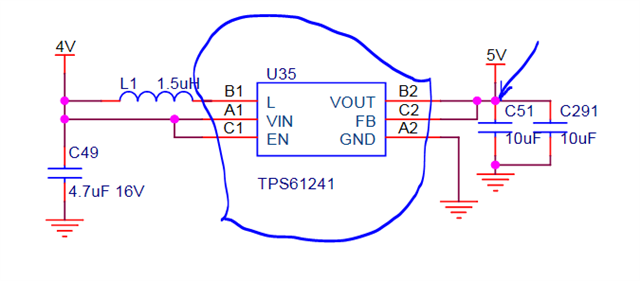we used the TPS61241 as boost DCDC, the VIN is 3.9V and VOUT is 5.0V, and L is 1.5uH, COUT are 2pcs 10uF/10V X5R, CIN is 4.7uF/16V X7R. And the PCBA is working at high temperature about 85℃ for long time. We building over 100K PCB for user, and now we found about 4-5% PCBA 5V power supply fail. Engineer test 12pcs fail PCBA sample under room temperature and find that 1pcs 5V output is short to GND, 8pcs 5V output is drop to 1.4V, 3pcs 5V output is about 4.2V with a large ripper wave with high temperature. May be the TPS61241 IC fail and how to improve the circuits?




